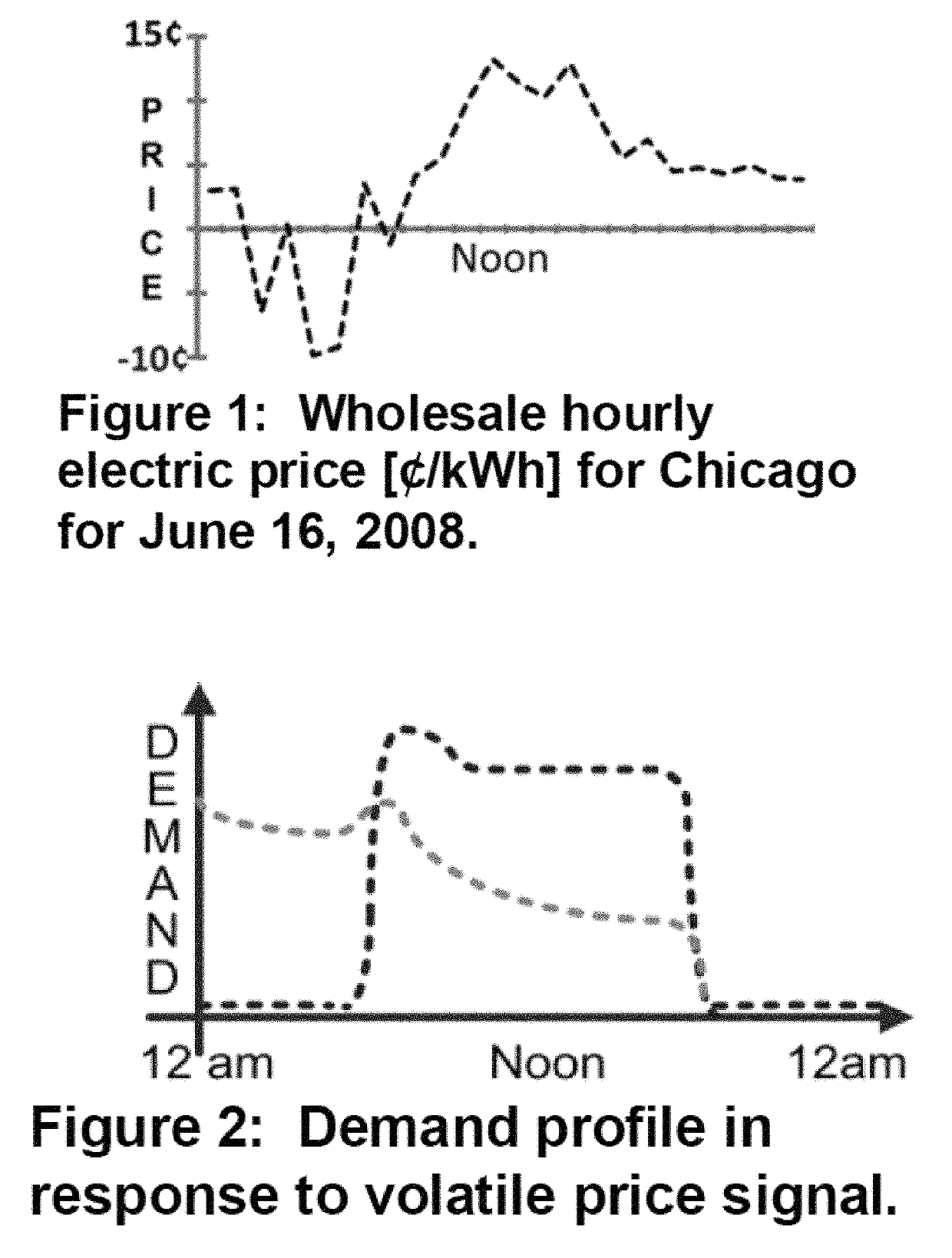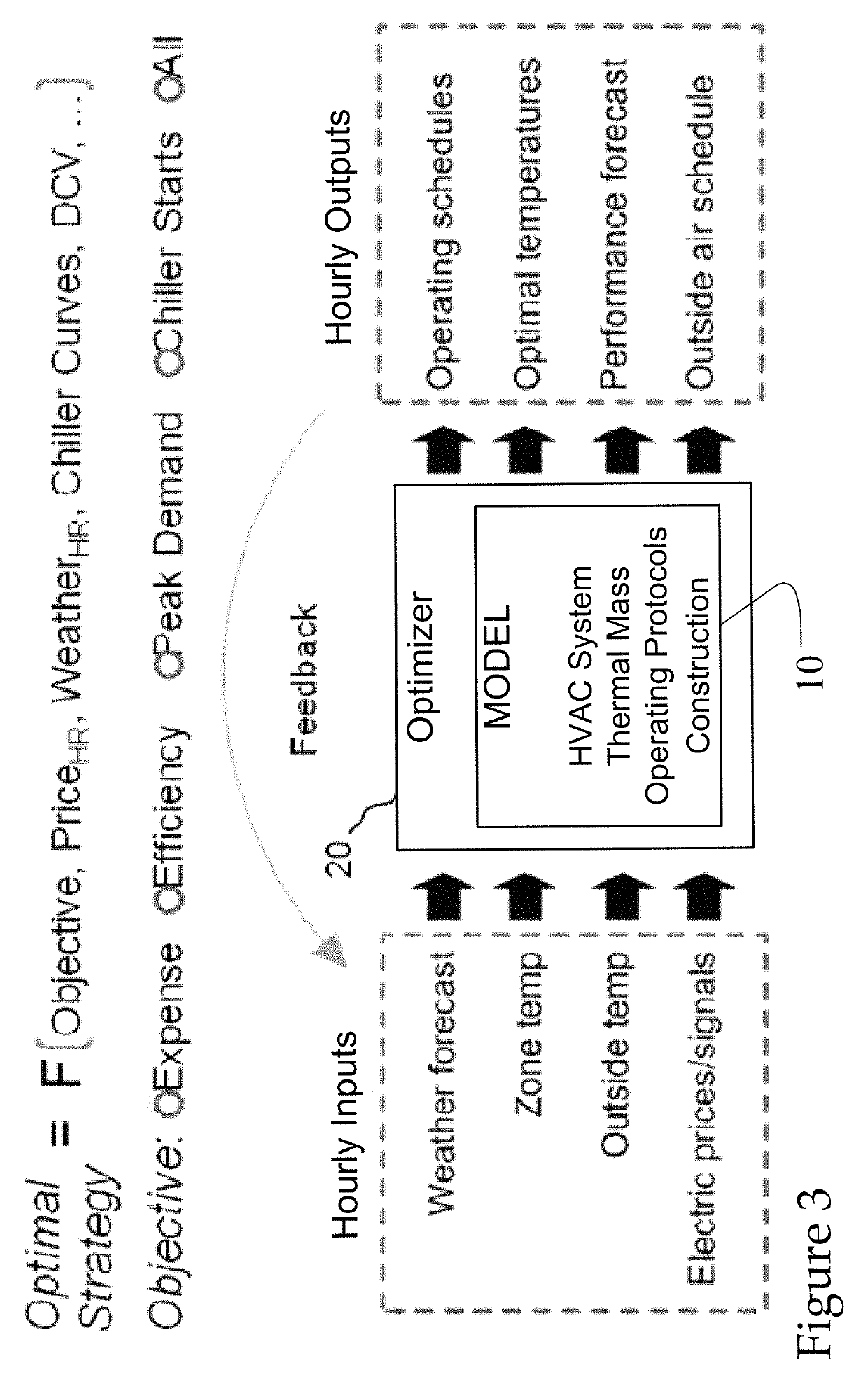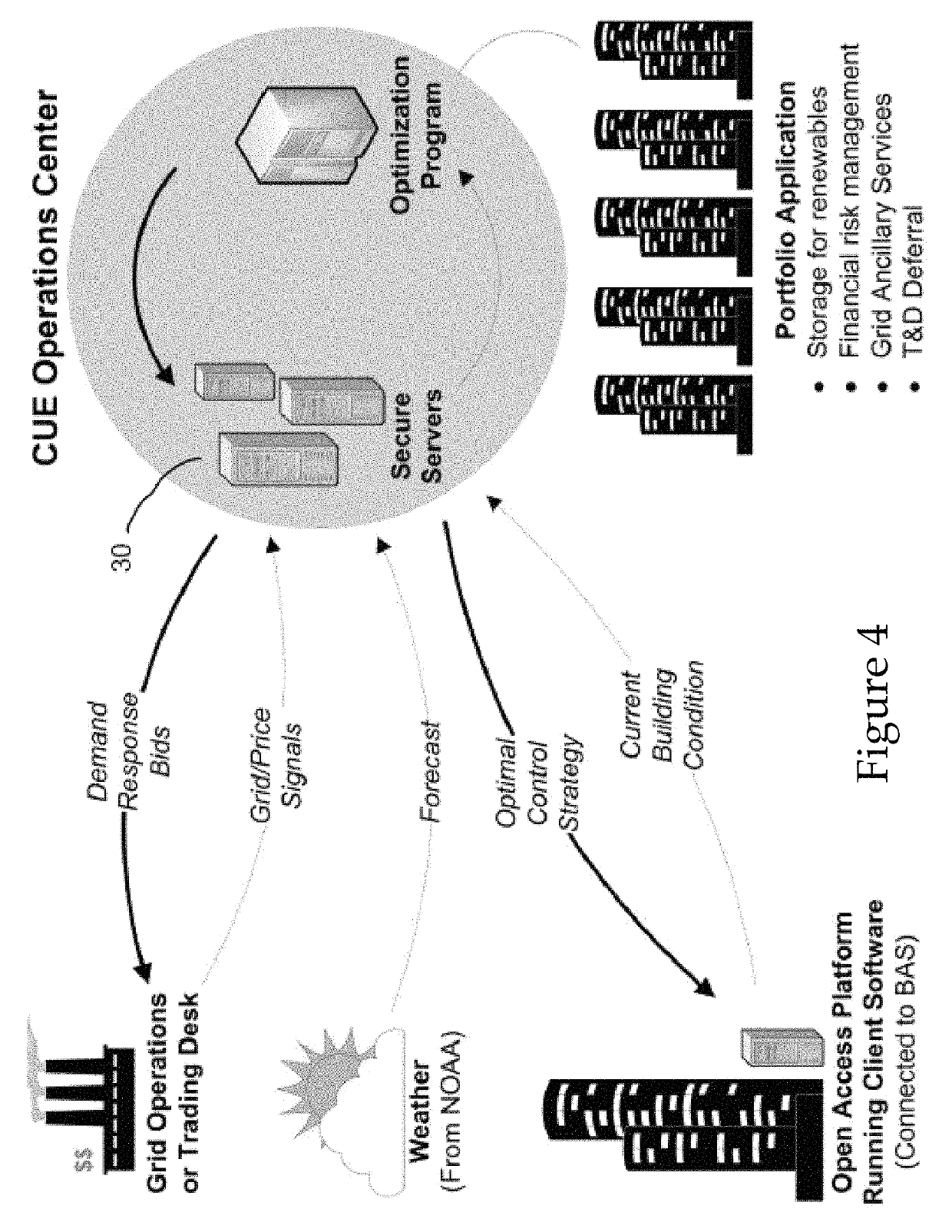Integration of commercial building operations with electric system operations and markets
a commercial building and electric system technology, applied in the direction of instruments, process and machine control, material dimension control, etc., can solve the problems of increasing infrastructure costs, varying electrical demand, dictating significant complexity and inefficiency in electric system investment, operations and markets, and electrical demand substantial and inefficien
- Summary
- Abstract
- Description
- Claims
- Application Information
AI Technical Summary
Benefits of technology
Problems solved by technology
Method used
Image
Examples
Embodiment Construction
[0033]At a basic level, the system can manipulate a global temperature set point within adjustable limits, enabling building energy system operations to optimally respond to price signals (FIG. 1) to economically shift and shape a building HVAC demand profile (FIG. 2).
[0034]The system described herein presents a holistic solution to optimize the performance of the entire electricity system, from generation to consumption. All other approaches that focus separately on either the grid or customer sides of the meter are sub-optimal, leaving significant untapped opportunities for efficiency improvement.
[0035]More specifically, the system presents an automated, on-line, scalable technology that continuously integrates the HVAC operations of large commercial buildings with electric grid operations and markets in grid-congested metropolitan areas. A system practicing the invention can harness the thermal mass, or “flywheel” effect, of these buildings on several time scales—diurnal, hourly,...
PUM
 Login to View More
Login to View More Abstract
Description
Claims
Application Information
 Login to View More
Login to View More - R&D
- Intellectual Property
- Life Sciences
- Materials
- Tech Scout
- Unparalleled Data Quality
- Higher Quality Content
- 60% Fewer Hallucinations
Browse by: Latest US Patents, China's latest patents, Technical Efficacy Thesaurus, Application Domain, Technology Topic, Popular Technical Reports.
© 2025 PatSnap. All rights reserved.Legal|Privacy policy|Modern Slavery Act Transparency Statement|Sitemap|About US| Contact US: help@patsnap.com



